What could be more appropriate to commemorate this Arbor Day, April 30, 2021, than a story about hundreds of seeds that went on a lunar journey 50 years ago and became known as Moon Trees after their saplings were planted throughout the world? Stuart A. Roosa, a U.S. Forest Service smoke jumper in the 1950s prior to his selection as a NASA astronaut, took hundreds of seeds with him on his Apollo 14 lunar mission in 1971. The Forest Service provided the seeds, and after their return to Earth, scientists germinated the seeds and donated the saplings to all 50 states in time for the nation’s Bicentennial in 1976. Subsequently, many locations including NASA field centers and universities have received Moon Trees and second-generation Half-Moon Trees. Although their true numbers are not known, they stand as living reminders of the historic Apollo missions of 50 years ago.
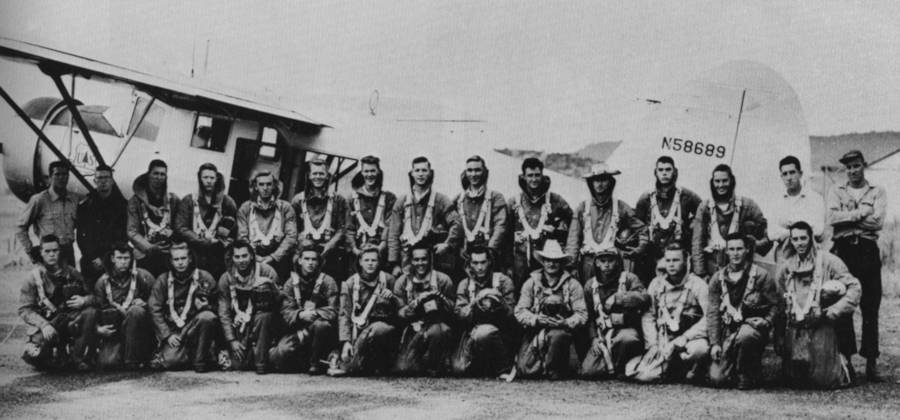
In this photo of the U.S. Forest Service smoke jumpers class of 1953, future astronaut
Stuart A. Roosa is in the back row, fourth from the left. Credit: Image courtesy
U.S. Forest Service.
In the 1950s, long before becoming an astronaut, Roosa served as a smoke jumper in the U.S. Forest Service, parachuting into wildfire scenes as a first responder. He later joined the U.S. Air Force before NASA selected him as an astronaut in 1966. As the Command Module Pilot on the Apollo 14 mission, Roosa spent nine days in space with fellow astronauts Alan B. Shepard and Edgar D. Mitchell between Jan. 31 and Feb. 9, 1971. Roosa orbited the Moon alone in the Command Module Kitty Hawk while Shepard and Mitchell explored the lunar surface at the Fra Mauro landing site. In a 6-inch by 3-inch cylindrical container in his Personal Preference Kit, Roosa carried between 400 and 500 seeds of five trees – loblolly pine, sycamore, sweetgum, redwood, and Douglas fir. Edward P. Cliff, head of the Forest Service at the time, proposed the idea to see the effects of a 9-day trip to the Moon and back on the seeds and assigned Forest Service geneticist Stanley L. “Stan” Krugman to manage the project. Although not a formal scientific experiment, seeds of the various trees kept on the ground in the same type of containers as those aboard Apollo 14 acted as controls.
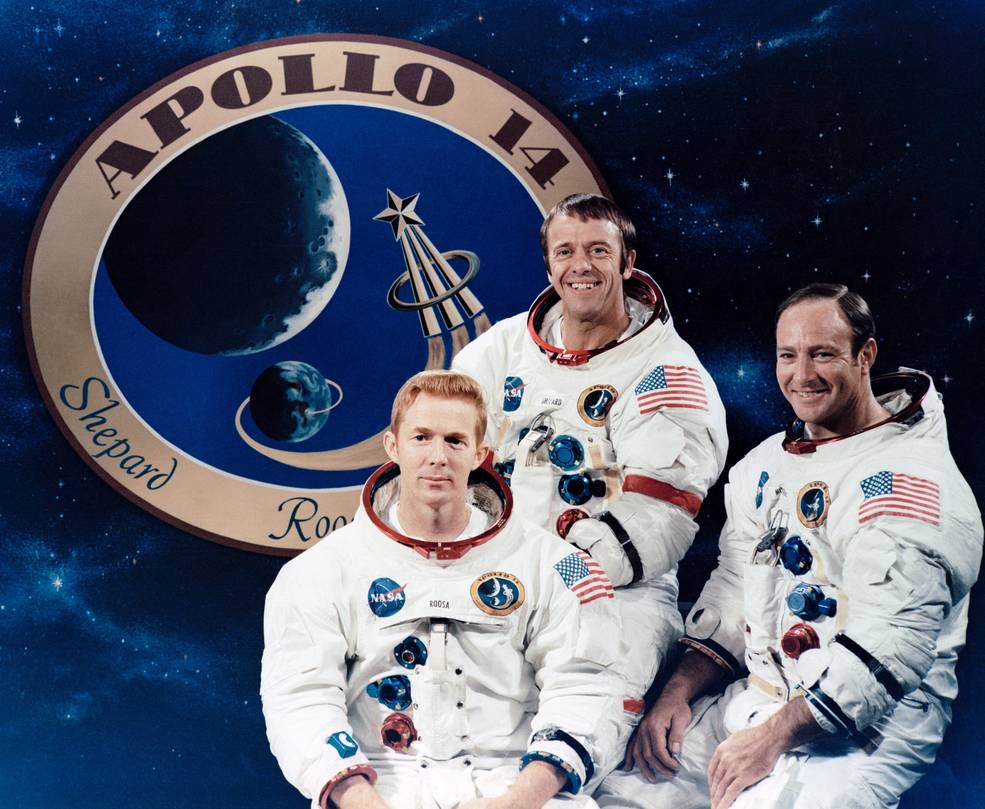
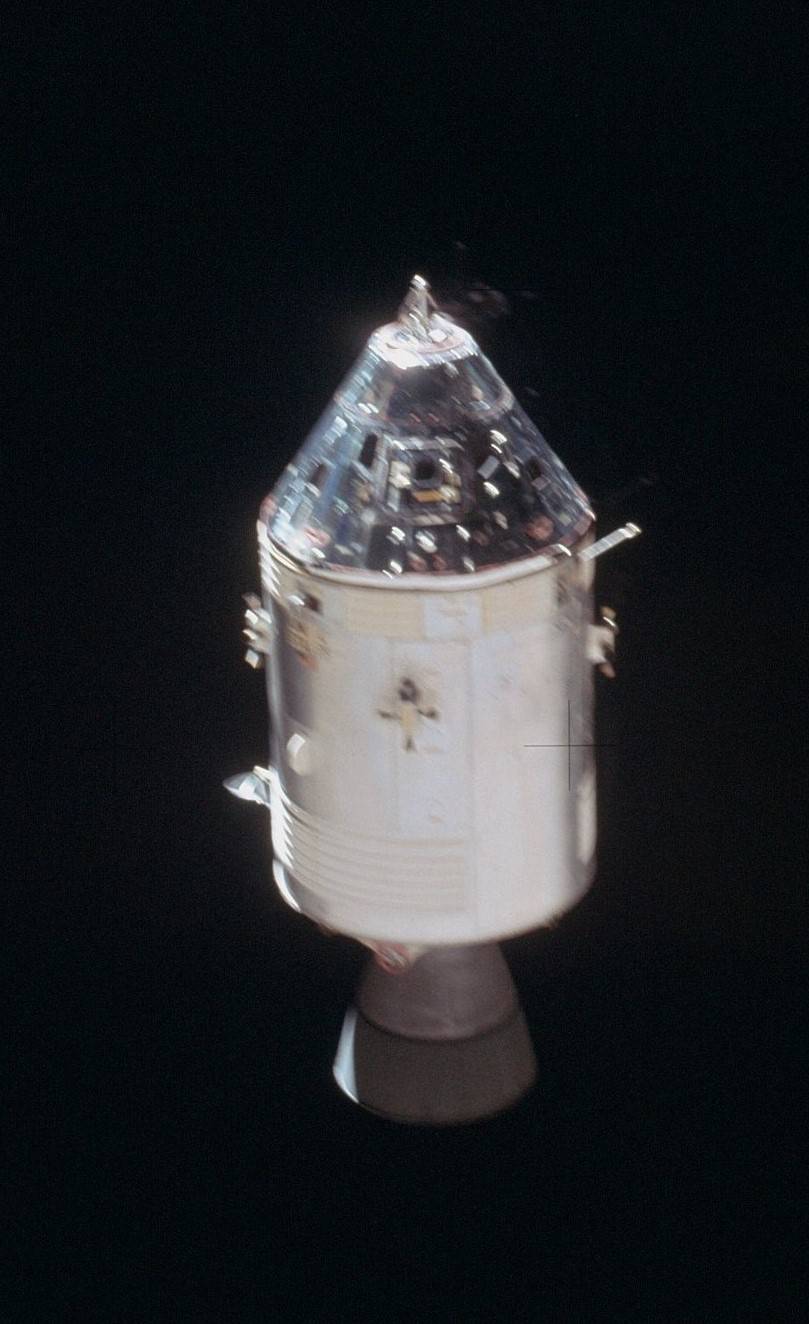
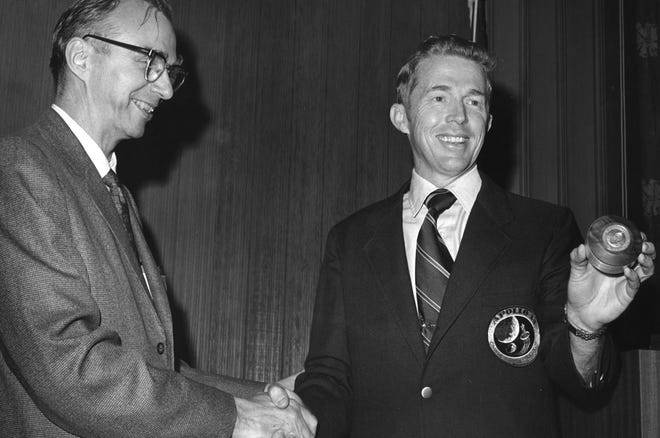
Left: The Apollo 14 crew of Stuart A. Roosa, left, Alan B. Shepard, and Edgar D. Mitchell. Middle: The Apollo 14 Command and Service Module Kitty Hawk in lunar orbit. Right: U.S. Forest Service Associate Chief Arthur W. Greeley, left, and Roosa, holding a container of Moon Tree seeds in 1971. Credit: U.S. Forest Service.
After the seeds returned to Earth, a mishap occurred during the decontamination of the container in the Lunar Receiving Laboratory quarantine facility at the Manned Spacecraft Center, now NASA’s Johnson Space Center (JSC) in Houston. When exposed to vacuum, the container split open and the seeds intermingled, and geneticist Krugman worried the seeds might not germinate. He split the seeds into two batches and sent them to the Southern Forest Research Station in Gulfport, Mississippi, and the Western Research Station in Placerville, California. The space-flown seeds germinated as well as the ground controls and yielded more than 400 saplings that became known as Moon Trees.
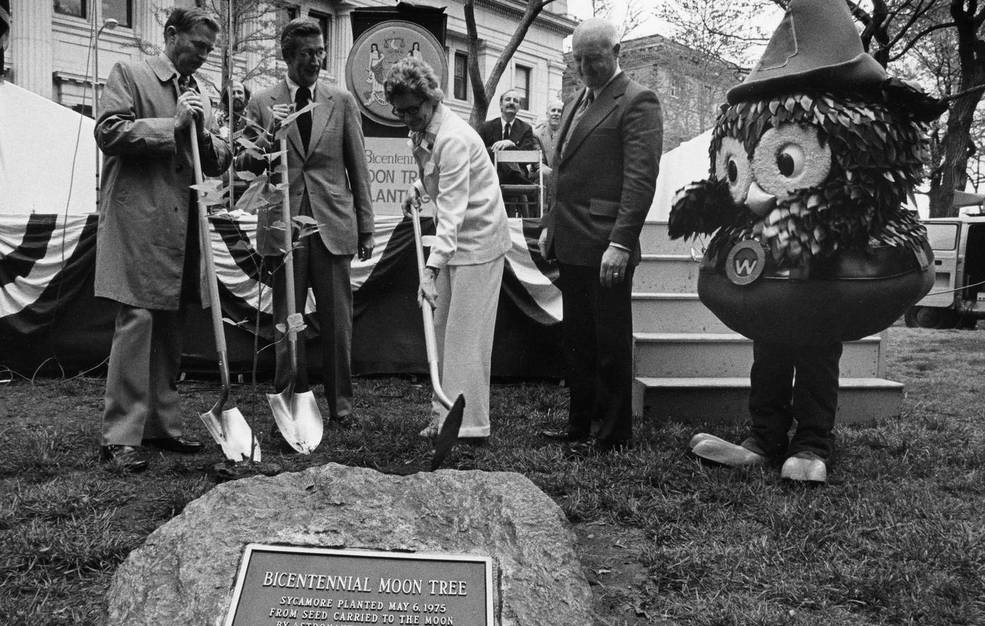
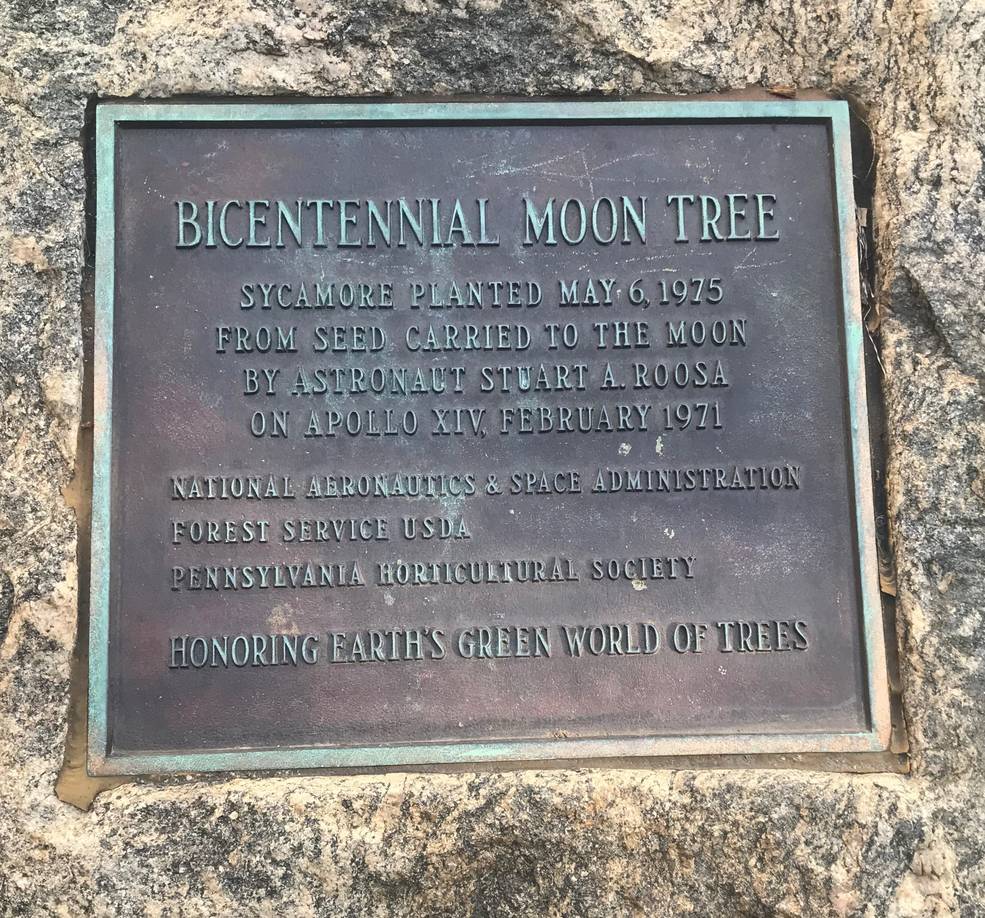
Left: Apollo 14 astronaut Stuart A. Roosa, left, John R. McGuire, Chief of the U.S. Forest Service, Ernesta D. Ballard, Director of the Pennsylvania Horticultural Society, and Woodsy the Owl, mascot for the U.S. Forest Service, attending the Bicentennial Moon Tree planting ceremony in Philadelphia in 1975. Credit: Image courtesy Lisa Perez. Right: Plaque marking the site of the Bicentennial Moon Tree in Philadelphia. Credit: NASA/John Uri.
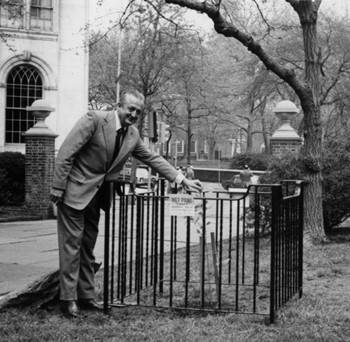
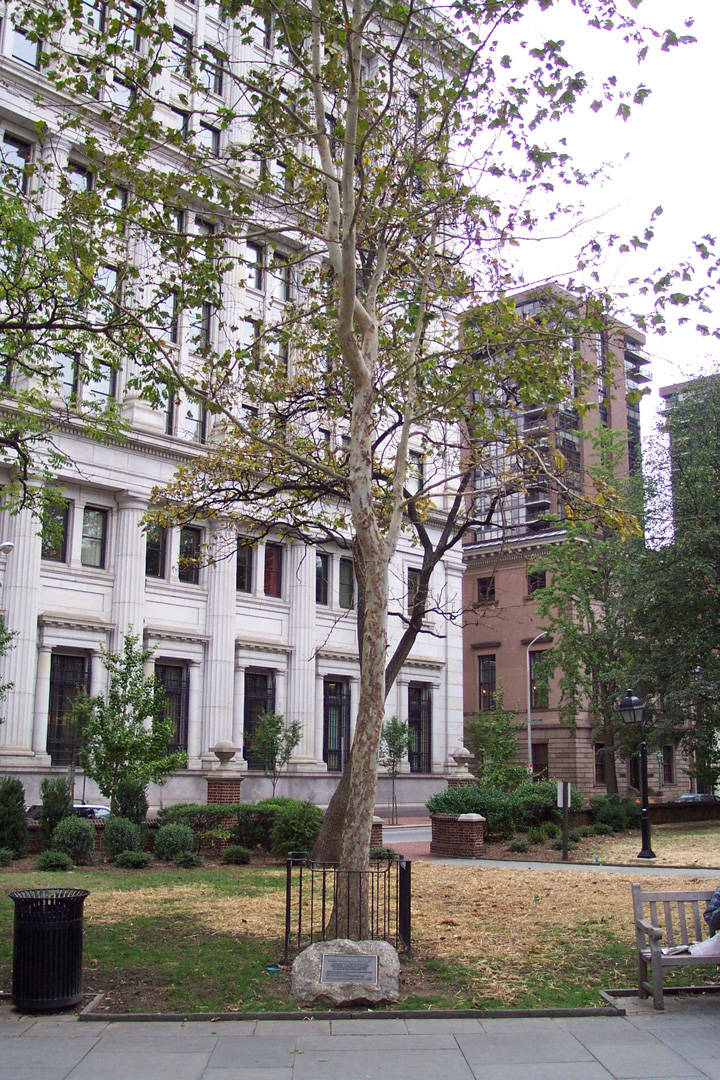
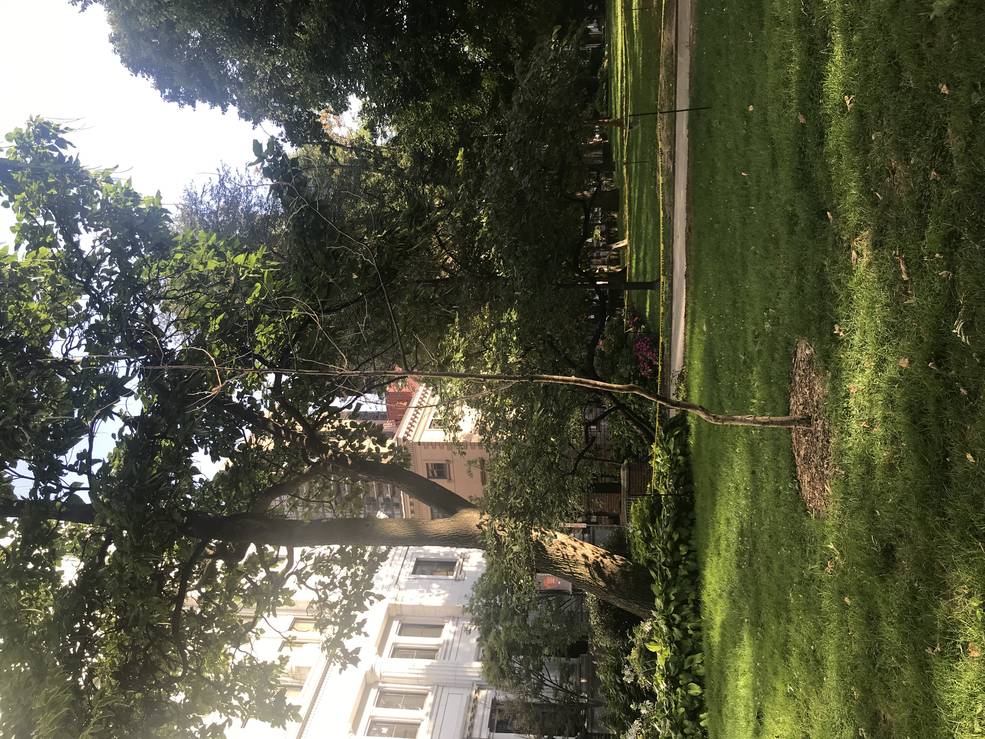
Left: George Vitas of the U.S. Forest Service stands next to the newly planted sycamore Moon Tree in Philadelphia in 1975; Independence Hall is visible in the background. Credit: Image courtesy Lisa Perez. Middle: The sycamore Moon Tree in Philadelphia in 2000. Credit: Image courtesy Christopher Palmer. Right: The cloned Moon Tree in 2019 shortly before its removal. Credit: NASA/John Uri.
In preparation for the nation’s bicentennial in 1976, the Forest Service distributed seedlings to all fifty states. President Gerald R. Ford sent this statement to the planting ceremonies, “This tree which was carried by Astronauts Stuart Roosa, Alan Shepard, and Edgar Mitchell on their mission to the Moon, is a living symbol of our spectacular human and scientific achievements. It is a fitting tribute to our national space program which has brought out the best of American patriotism, dedication, and determination to succeed.” The first official bicentennial Moon Tree planting took place on May 6, 1975, in Philadelphia’s Washington Square Park, near Independence Hall. Roosa, along with representatives of the Forest Service, the Pennsylvania Horticultural Society and the city of Philadelphia, attended the planting of the sycamore seedling. The tree died in 2008 and the Independence National Historical Park removed it in 2011. A clone of the original tree planted in 2016 did not fare well and was removed in 2019. The Forest Service planted trees at other locations, including one on the White House grounds, but that tree did not survive. Over the years, several countries including Brazil, Switzerland, Japan and Italy received Moon Tree saplings.
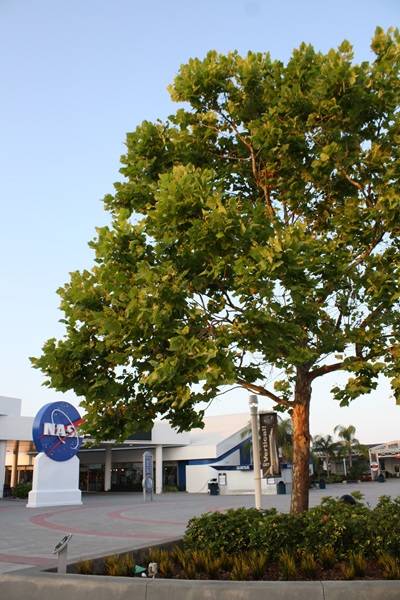
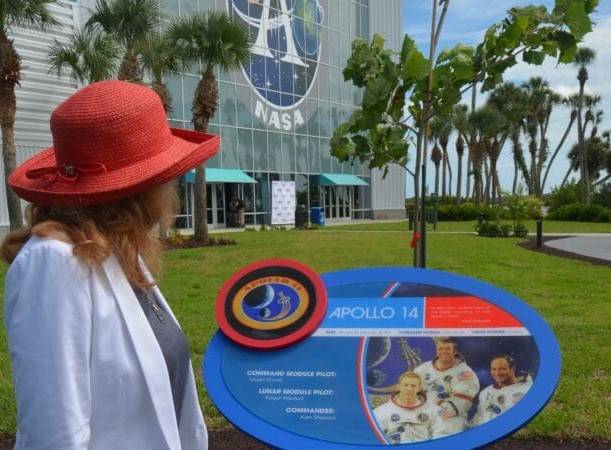
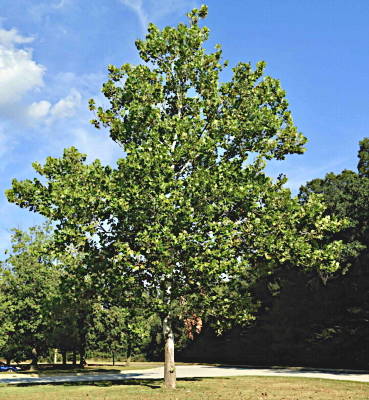
Left: The sycamore Moon Tree at NASA’s Kennedy Space Center’s (KSC) Visitor Complex before it fell victim to Hurricane Irma in 2017. Middle: Rosemary Roosa at the new Moon Tree Garden at the KSC Visitor Complex. Right: The sycamore Moon Tree at NASA’s Goddard Space Flight Center in Greenbelt, Maryland, planted in 1977.
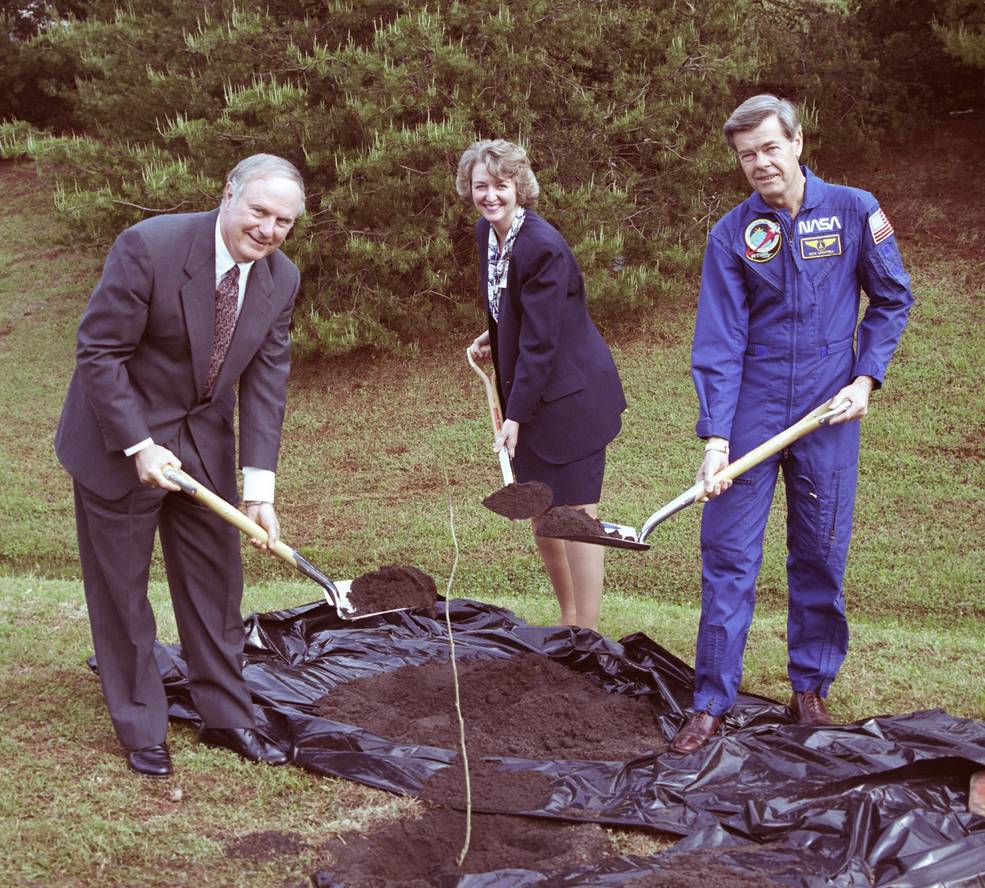
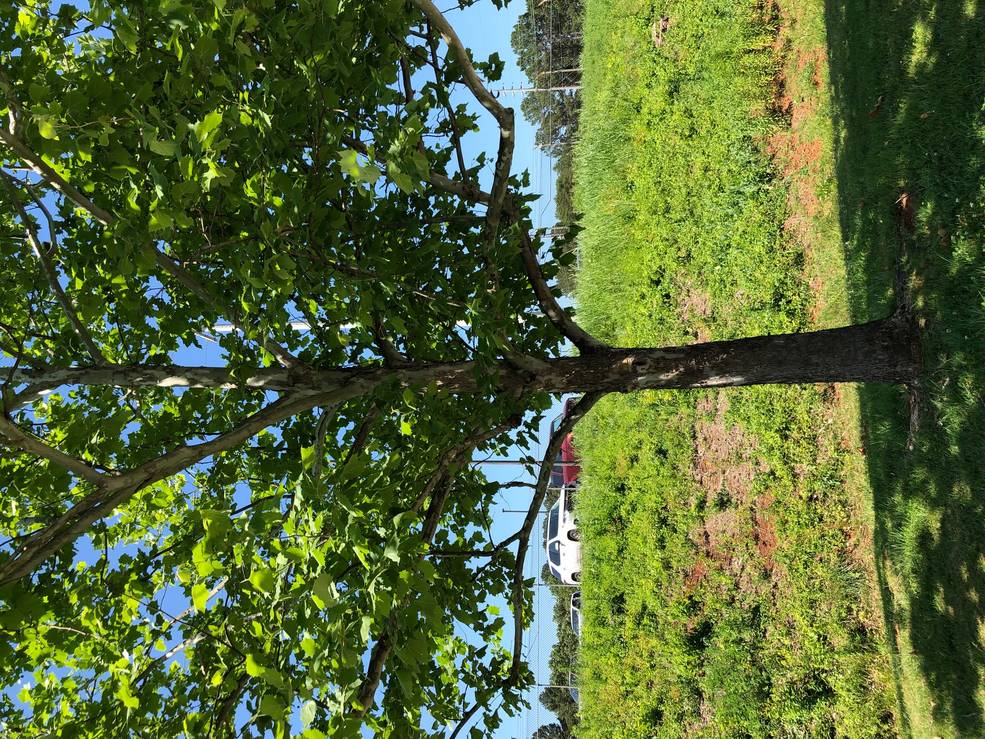

Left: Planting a Half-Moon sycamore tree in 1996 at NASA’s Marshall Space Flight Center in Huntsville, Alabama, are Center Director J. Wayne Littles, Deputy Director Carolyn S. Griner, and Associate Director for Science Charles R. “Rick” Chappell. Middle: The Half-Moon sycamore tree at Marshall in 2019. Credit: NASA/Brian Odom. Right: The Half-Moon loblolly pine at NASA’s Johnson Space Center in Houston in April 2021 (planted in 2016). Credit: NASA/John Uri.
The Forest Service planted Moon Trees or second-generation Half-Moon Trees at several of NASA’s field centers. NASA’s Kennedy Space Center (KSC) in Florida received the first Moon Tree, a sycamore that officials planted at the Visitor Complex in June 1976 for the Bicentennial. The tree did well for thirty years but fell victim to Hurricane Irma in September 2017. Two years later, the Visitor Complex added a Moon Tree Garden, consisting of 12 second-generation sycamore Moon Trees, one for each crewed Apollo mission. In June 1977, the Forest Service planted a sycamore Moon Tree at NASA’s Goddard Space Flight Center in Greenbelt, Maryland, outside the just-completed visitors center. The tree is there to this day. In April 1996, J. Wayne Littles, Center Director of NASA’s Marshall Space Flight Center in Huntsville, Alabama, Deputy Director Carolyn S. Griner, and Associate Director for Science Charles R. “Rick” Chappell planted a second-generation sycamore outside a building that played a key role in the development of the Saturn V rocket that launched Apollo 14 to the Moon. Another second-generation sycamore was planted at the Infinity Science Center, the visitors center at NASA’s Stennis Space Center in Bay St. Louis, Mississippi, in February 2011, the 40th anniversary of the Apollo 14 mission. Less well known is a Half-Moon loblolly pine planted in 2016 at NASA’s JSC in Houston, outside the building that houses the astronauts’ offices. The tree is healthy and growing taller.
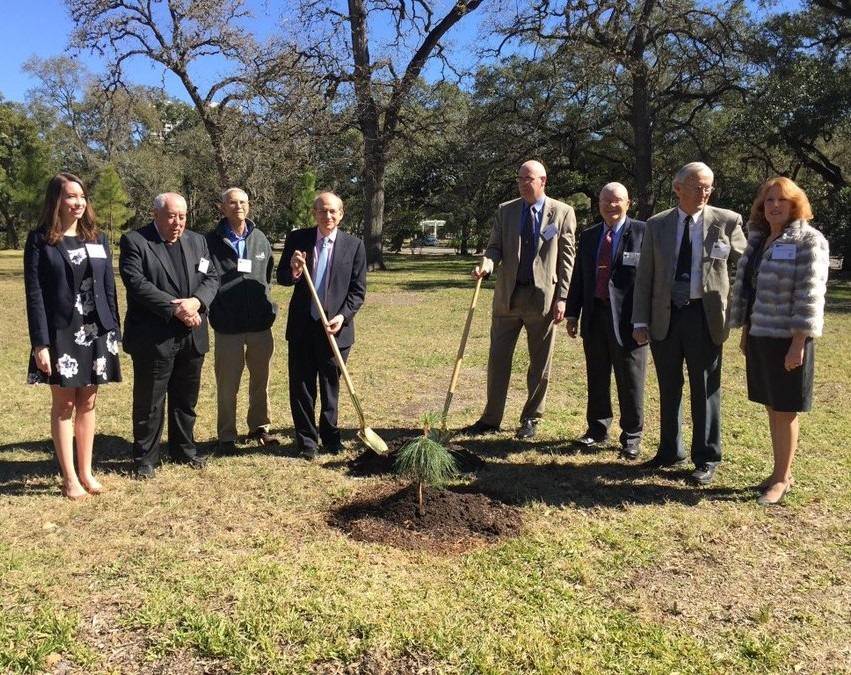
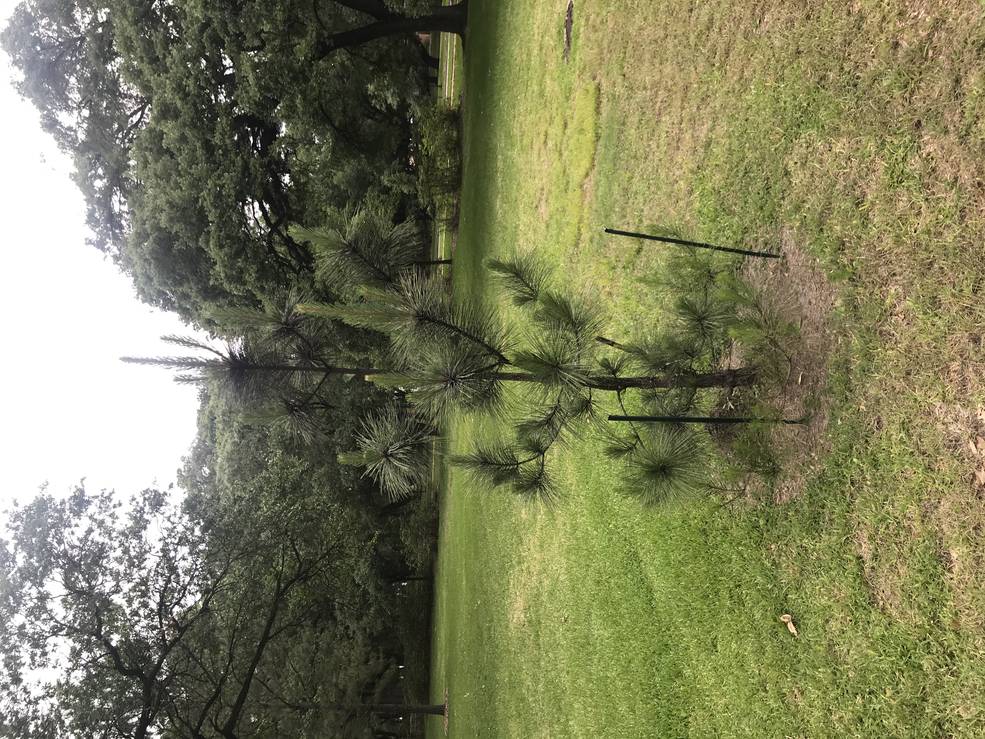
Left: Attending the February 2016 planting of a Half-Moon loblolly pine on the Rice University campus are Rice student Rachel Turkington, left, former director of NASA’s Johnson Space Center in Houston George W.S. Abbey, Rice space physics and astronomy professor John W. Freeman, Rice president David W. Leebron, Rice Space Institute Director David Alexander, Apollo 13 astronaut Fred W. Haise, Apollo 16 astronaut Charles M. Duke, and Rosemary Roosa, president of the Moon Tree Foundation. Credit: Image courtesy Rice University/Jeff Fitlow. Right: The loblolly pine at Rice in April 2021. Credit: NASA/John Uri.
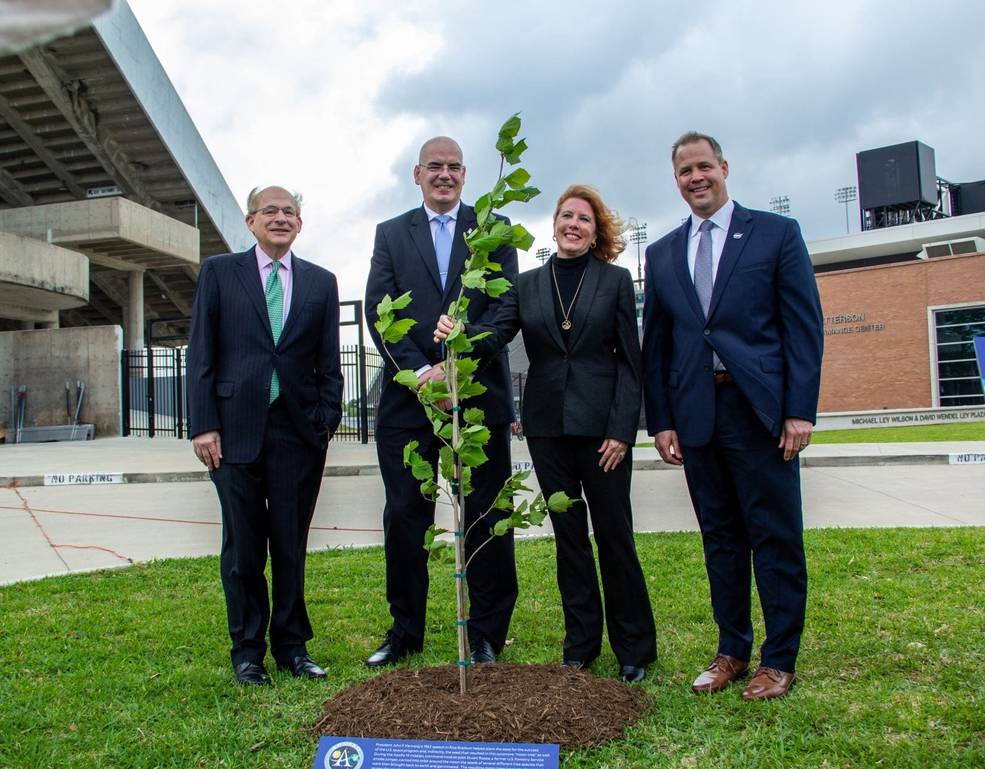
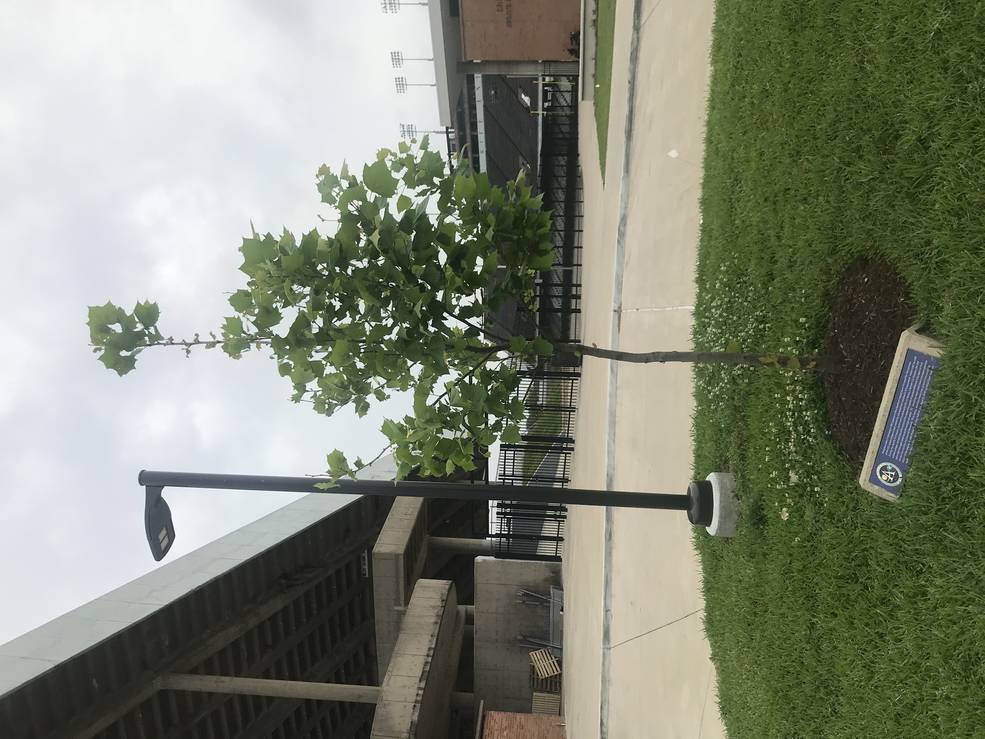
Left: Rice University President David W. Leebron, left, Rice Space Institute Director
David Alexander, Moon Tree Foundation President Rosemary Roosa, and NASA
Administrator James F. “Jim” Bridenstine at the dedication of a second-generation
sycamore Moon tree in 2019. Credit: Image courtesy Rice University/Jeff Fitlow.
Right: The sycamore in April 2021. Credit: NASA/John Uri.
Over the years, Moon Trees and Half-Moon Trees have been planted in probably hundreds of locations, and universities have received many of them. Rice University in Houston, with a long history of collaboration with NASA, has two Half-Moon trees. A loblolly pine was planted on Feb. 9, 2016, the 45th anniversary of the splashdown of Apollo 14, a ceremony attended by former JSC Center Director George W.S. Abbey and Apollo astronauts Fred W. Haise and Charles M. Duke, as well as Roosa’s daughter Rosemary, president of the Moon Tree Foundation, a non-profit organization dedicated to planting a Moon Tree in every corner of the world, to inspire interest in education, science, space, and conservation. On April 12, 2019, NASA Administrator James F. “Jim” Bridenstine dedicated a second-generation sycamore during a ceremony outside Rice Stadium where in his September 1962 speech, President John F. Kennedy said, “We choose to go to the Moon in this decade and do the other things, not because they are easy, but because they are hard.”
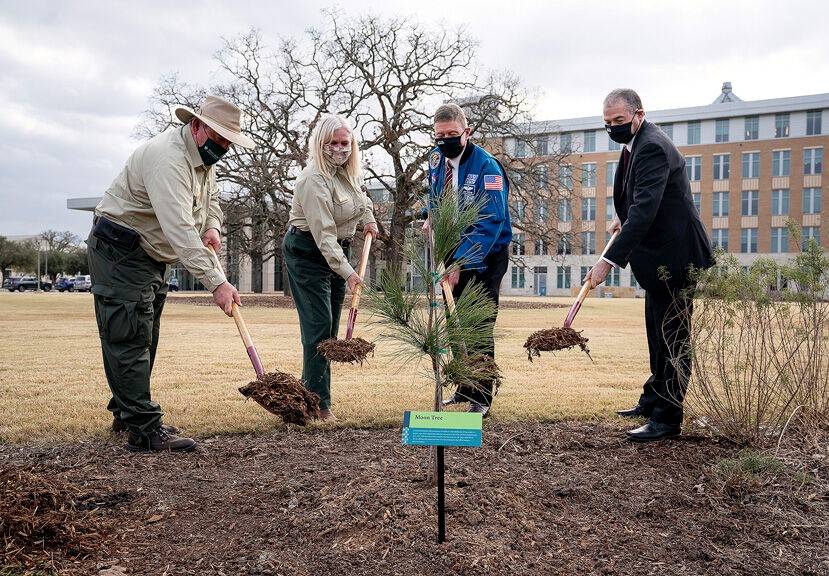
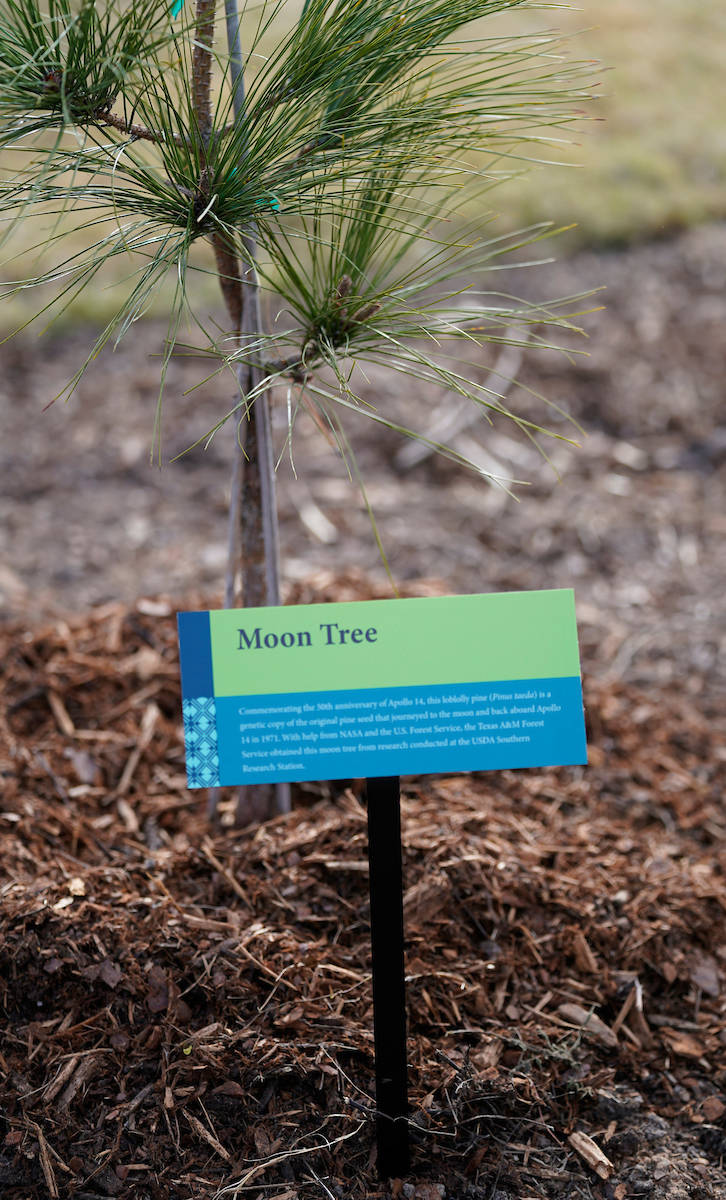
Left: Attending the February 2021 planting of a Half-Moon loblolly pine at Texas A&M University are Thomas G. “Tom” Boggus of the Texas A&M Forest Service, Jan Davis of the U.S. Forest Service, former NASA Astronaut and chief operating officer at Texas A&M University at Galveston Michael E. Fossum, and Texas A&M Professor Patrick J. Stover. Right: Sign describing the Half-Moon loblolly pine at Texas A&M. Credits: Images courtesy Texas A&M AgriLife/Laura McKenzie.
To commemorate the 50th anniversary of the Apollo 14 mission, in February 2021 Texas A&M University in College Station, Texas, another university with long-standing ties to NASA, planted a second-generation loblolly pine in The Gardens. Former NASA astronaut Michael E. Fossum, now chief operating officer at Texas A&M University at Galveston, attended the ceremony.
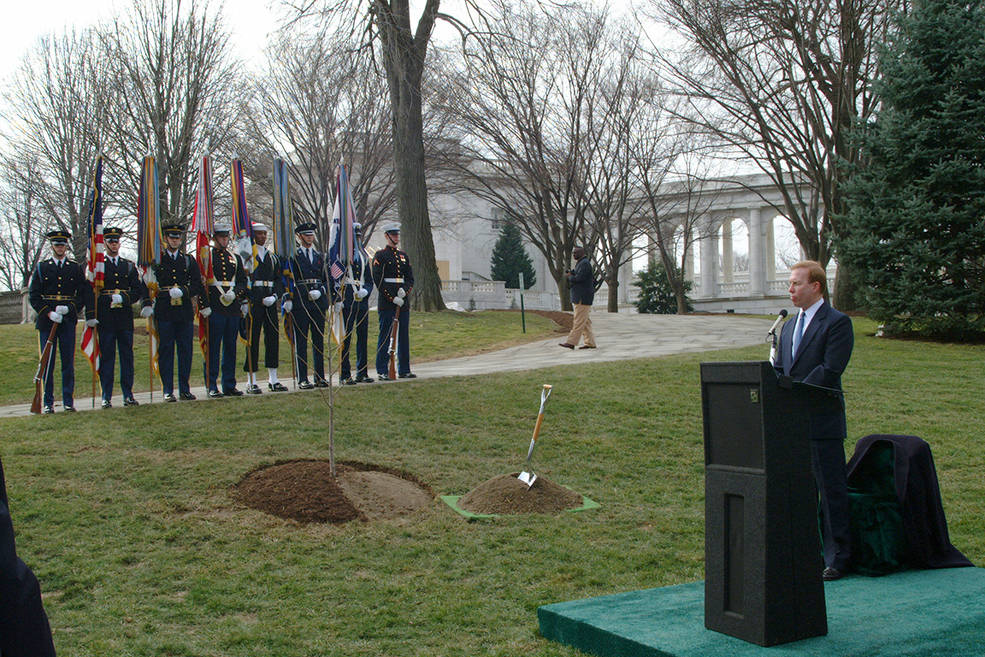
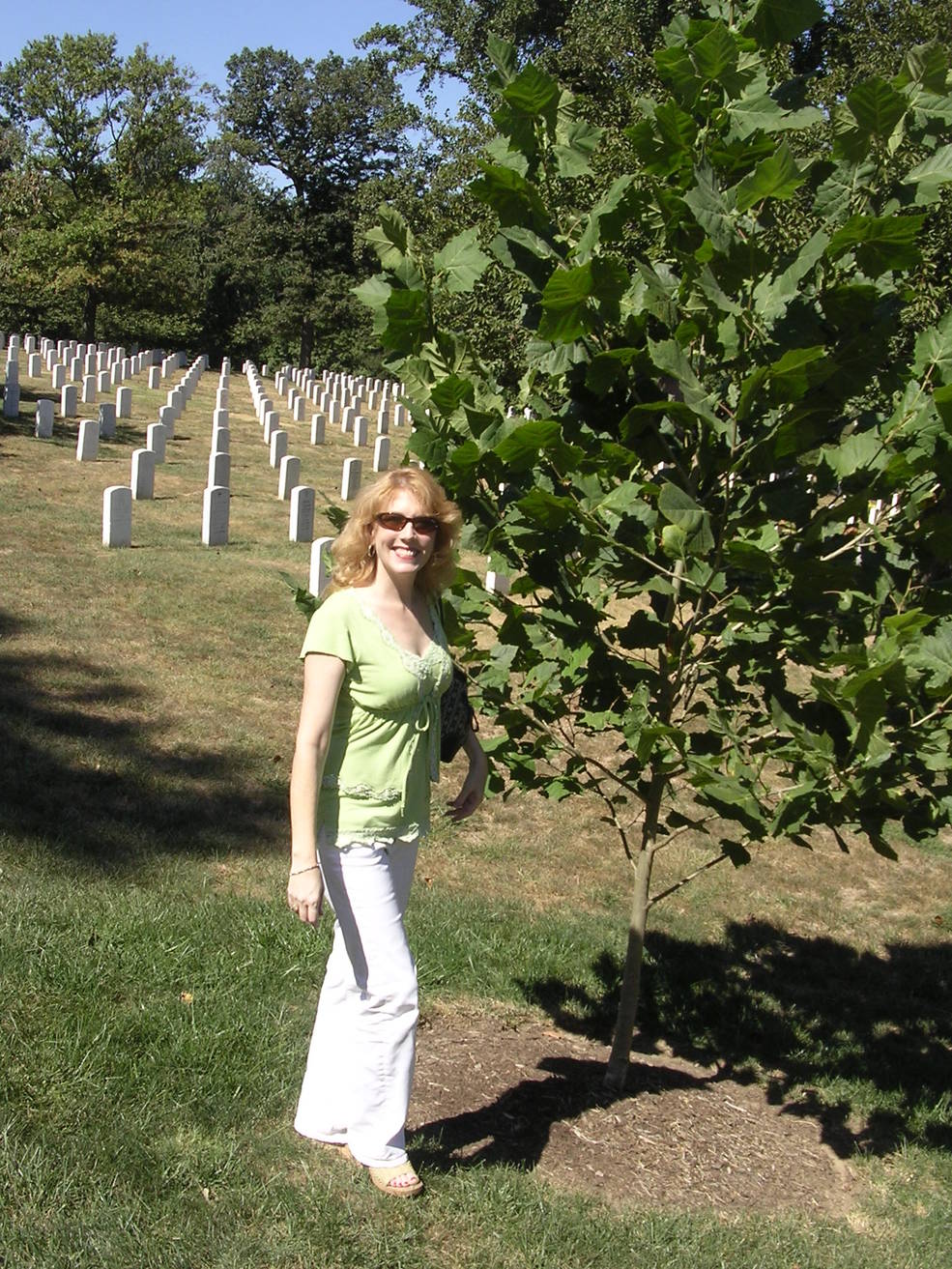
Left: Christopher Roosa speaking at the Half-Moon sycamore planting near his father’s grave at Arlington National Cemetery in 2005. Credit: Image courtesy Jay Friedlander. Right: Rosemary Roosa standing next to the sycamore at Arlington in 2011. Credit: Image courtesy Rosemary Roosa.
Roosa passed away in 1994 and was buried in Arlington National Cemetery. In a fitting tribute, a second-generation sycamore Moon Tree was planted in a ceremony held Feb. 9, 2005, the 34th anniversary of Apollo 14’s splashdown. The tree was planted near the Tomb of the Unknown Soldier and up the hill from Roosa’s grave and those of other distinguished astronauts buried at Arlington. Roosa’s widow Joan and four children attended, with his son Christopher eulogizing his father. NASA Administrator Sean C. O’Keefe and Associate Administrator for Space Flight William F. Readdy delivered remarks. At last report, the tree is doing well. All the Moon Trees and Half-Moon Trees around the world stand as living reminders of the Apollo Moon landings of 50 years ago.


























